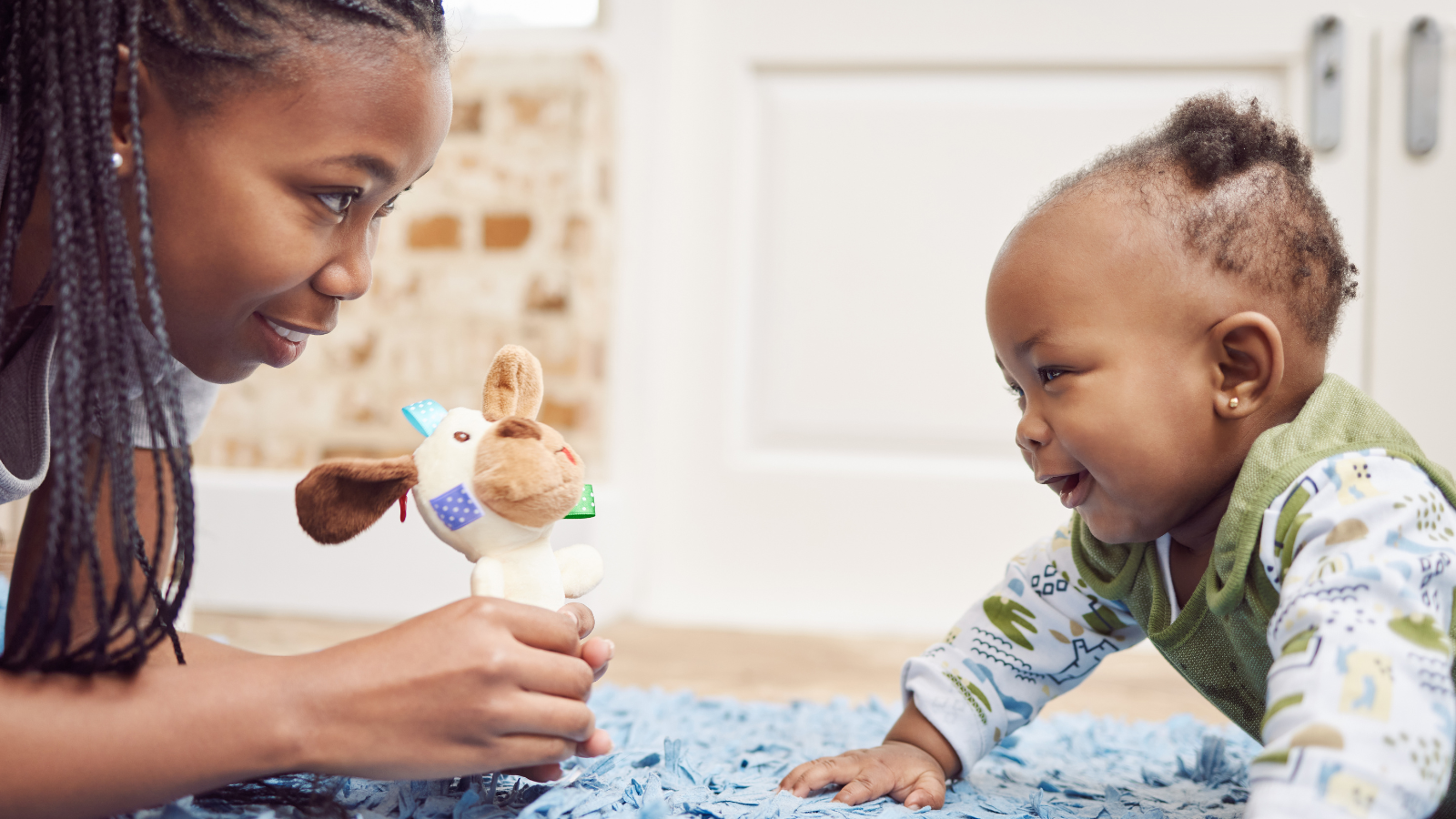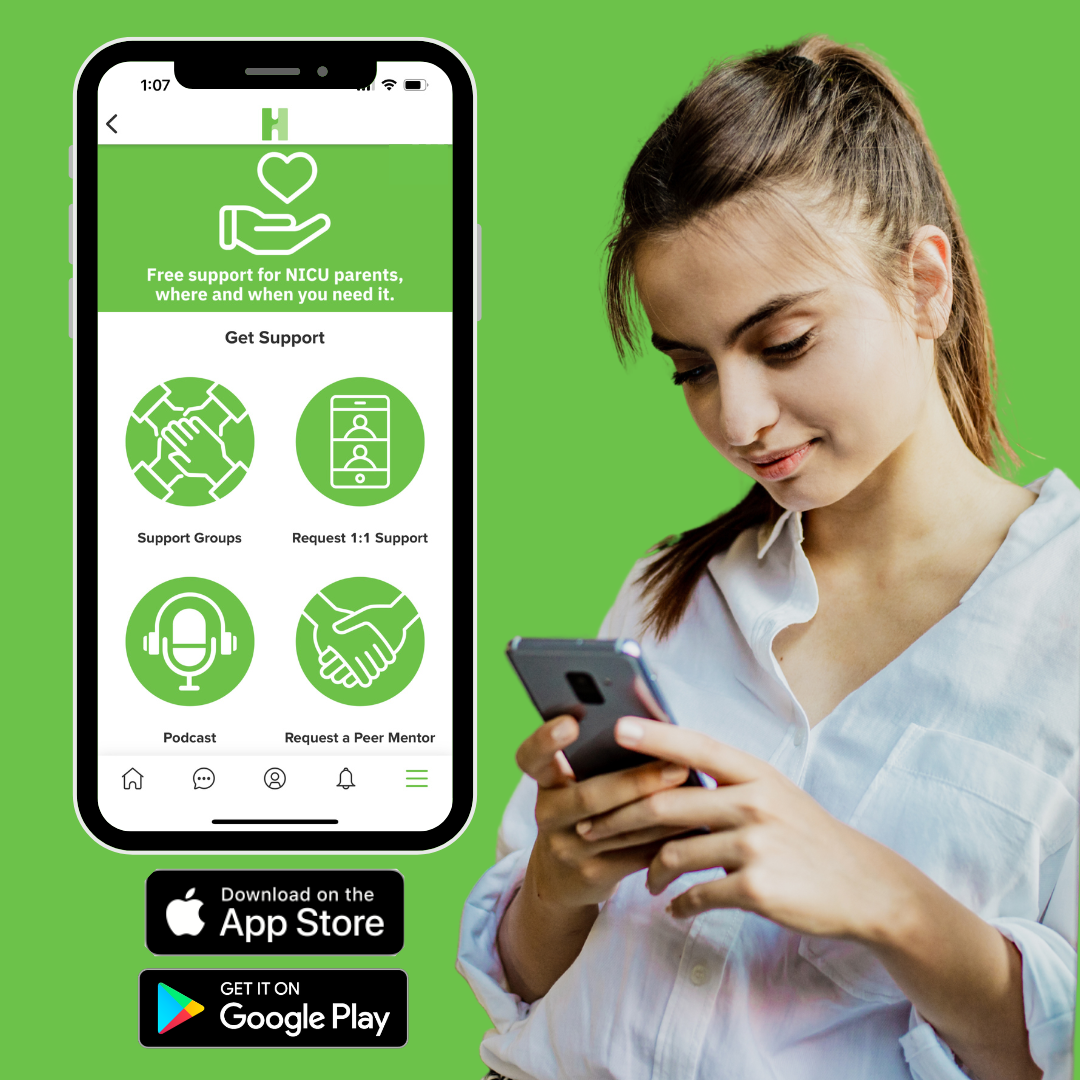Playing with your baby is therapeutic in nature and helps provide an opportunity for parents, caregivers, and family members to bond with their baby.

by Eliana Cutler, Occupational Therapy student and doctoral candidate at Midwestern University’s College of Health Sciences
The NICU can be overwhelming for new and experienced parents alike. It can be difficult to think about what playing with your baby may look like as your baby grows. Playing with your baby can help with cognitive, physical, language and social-emotional developments, and provides an opportunity for your baby to learn skills in a naturalistic way. Playing with your baby is therapeutic in nature and helps provide an opportunity for parents, caregivers, and family members to bond with their baby. Recent research shows that interactions with parents and a child’s learning environment at home is more influential to a child’s development than preschool.
What is play?
Play activities should meet the following four criteria:
- Play activity is fun for your child
- Your child is in charge of the activity
- The play activity is constantly changing based on your child’s needs, imagination and developmental abilities
- Your child is not trying to reach any goal
Where should you play?
Ideally, playing with your baby should take place in a well-lit, quiet and stress-free environment. This will reduce distractions and allow your child to focus on playing. Your child’s safety should be taken into consideration. It is important that the child is able to freely and safely explore their environment as independently as possible, so make sure to eliminate any choking hazards or unsteady furniture.
LISTEN NEXT: FEEDING THERAPY: TAKING THE BATTLE OUT OF MEALTIME
When should you play?
As a general guideline for infants, the American Academy of Pediatrics recommends 10 minutes of tummy time daily per month of (adjusted) age. Toddlers should have 15 minutes of physical activity per hour that they are awake each day.
Play time does not always need to be scheduled or structured. Instead, try to mix playtime and “playfulness” throughout your day. Playfulness, or the fun and joyful mindset that a person assumes during play, can be intertwined throughout daily activities. Think about making diaper changes into a game, playing with toys during bath time, or “zooming” food on an “airplane” into your child’s mouth during mealtimes.
Your child should always be in charge of play activities. Before your baby can use words or gestures to communicate, use your baby’s body language to understand when they are trying to communicate that they want to play with you. Some signs that your baby wants to play may include:
- Making eye contact with wide and bright eyes
- Smiling
- Making smooth movements of hands and feet
- Reaching out towards you or towards toys
Play is a valuable learning experience for even the youngest babies, so have fun with it!

 Download the app designed specifically for NICU & bereaved parents. Get support, find community, and learn from educational resources, all in the Hand to Hold app. Available in the
Download the app designed specifically for NICU & bereaved parents. Get support, find community, and learn from educational resources, all in the Hand to Hold app. Available in the